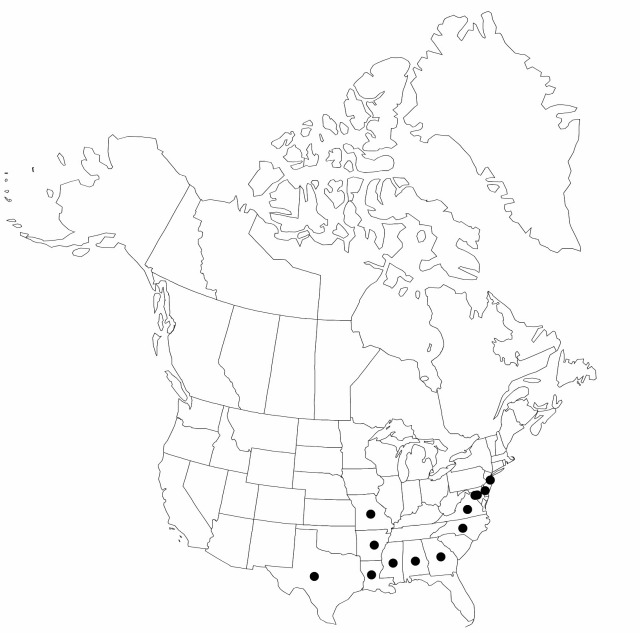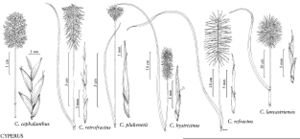Difference between revisions of "Cyperus hystricinus"
Rhodora 8: 127. 1906.
imported>Volume Importer |
imported>Volume Importer |
||
| Line 58: | Line 58: | ||
|publication year=1906 | |publication year=1906 | ||
|special status=Illustrated;Endemic | |special status=Illustrated;Endemic | ||
| − | |source xml=https:// | + | |source xml=https://bitbucket.org/aafc-mbb/fna-data-curation/src/2e0870ddd59836b60bcf96646a41e87ea5a5943a/coarse_grained_fna_xml/V23/V23_309.xml |
|genus=Cyperus | |genus=Cyperus | ||
|subgenus=Cyperus subg. Cyperus | |subgenus=Cyperus subg. Cyperus | ||
Latest revision as of 20:39, 5 November 2020
Herbs, perennial, cespitose, with well-developed rhizomes. Culms trigonous, 30–100 cm × 2–4 mm, basally cormlike, glabrous. Leaves flat to broadly V-shaped, 20–70 cm × 4–6 mm, glabrous except for marginal prickles. Inflorescences: spikes loosely to densely ovoid, oblong (2 times long as wide), 10–12 × 6–9 mm; rays 6–11, 1–16 cm, glabrous; bracts 5–10, ascending at 30–45°, flat, 6–25 cm × 3–6 mm; rachilla persistent, wings 0.5 mm wide, covering nearly entire length of achene. Spikelets (20–)40–100(–120), proximal spikelets reflexed somewhat, distal ones divaricate, ± terete, lanceoloid, 6–6.8 × 1–1.4 mm; floral scales persistent, 1–2(–3), appressed, golden brown, lanceolate, laterally 5–6-ribbed, 3.8–4.9 × 1.4–1.6 mm, apex mucronate, mucro at most 0.3 mm. Flowers: anthers 1–1.3 mm; styles 0.8–1 mm; stigmas 2–3 mm. Achenes brown, sessile, linear, 2.5–2.8 × 0.5–0.7 mm, apex obtuse, apiculate, surfaces muriculate.
Phenology: Fruiting late summer–early fall (Jul–Sep).
Habitat: Xeric, sandy soils of sand hills and pine barrens
Elevation: 0–200 m
Distribution

Ala., Ark., Del., D.C., Ga., La., Md., Miss., Mo., N.J., N.C., Tex., Va.
Discussion
Cyperus hystricinus resembles C. plukenetii and C. retrofractus; it can be readily distinguished from both by its glabrous culms. Overly mature specimens of C. lancastriensis are frequently misidentified as C. hystricinus; C. hystricinus may be confirmed by its narrow, nearly glabrous leaves and bracts, golden brown spikelets, longer, narrower achenes, and elongated rhizome internodes (to 15 mm vs. 5 mm in 76. C. lancastriensis).
Selected References
None.
